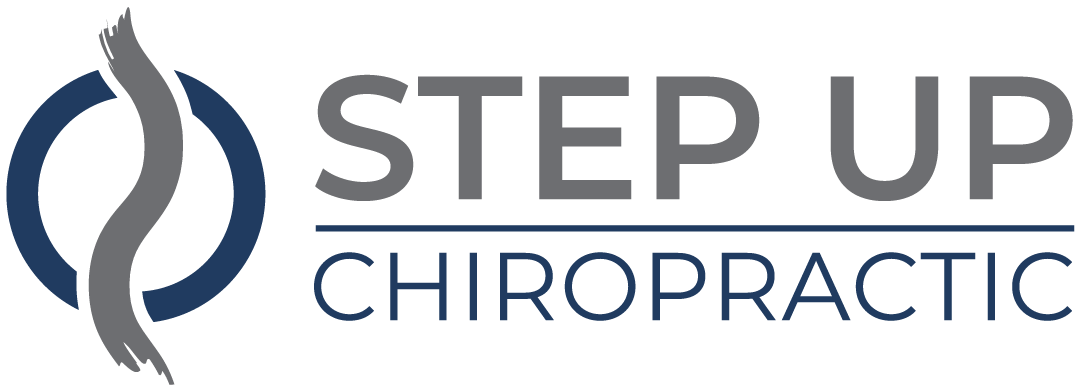When you experience a headache or migraine, turning to natural remedies can often provide relief without the side effects of pharmaceuticals. You might find that herbal options like peppermint and feverfew, along with essential oils, can ease your pain effectively. However, the role of dietary changes and hydration is often overlooked in prevention. By exploring these remedies, you may uncover strategies that not only alleviate your symptoms but also enhance your overall well-being. Curious about which specific techniques might work best for you?
Understanding Headaches and Migraines
Headaches and migraines can feel like unwelcome intruders in your day, disrupting everything from work to relaxation. Understanding their causes and symptoms is essential for managing them effectively. You might experience a headache as a dull ache or a sharp pain, often localized to one area of your head.
Migraines, on the other hand, can manifest as intense, throbbing pain, frequently accompanied by other symptoms like nausea, light sensitivity, or aura.
You'll want to be aware of the different types of headaches. Tension headaches, for instance, are the most common and are often triggered by stress, muscle tension, or poor posture.
Cluster headaches are rare but excruciating, occurring in periodic clusters, usually affecting one side of your head. Migraines can be episodic or chronic, with triggers like hormonal changes, certain foods, or environmental factors.
Recognizing your specific triggers can help you avoid potential headache episodes. Keeping a headache diary can be an effective tool for tracking your symptoms and identifying patterns.
Pay attention to your diet, sleep habits, and stress levels, as these can all play a significant role in the frequency and intensity of your headaches.
Herbal Remedies for Relief
When it comes to herbal remedies for headaches, you'll find several popular choices that can provide relief.
Understanding how to prepare these herbs and the right dosages is essential for effectiveness.
Let's explore these options together to help you find what works best for you.
Popular Herbal Choices
Herbal remedies have gained popularity as effective alternatives for headache relief, offering a natural approach to managing discomfort. If you're looking for options, consider some well-known herbs that have shown promise in alleviating headaches.
Peppermint is a favorite among many for its cooling effect. Applying diluted peppermint oil to your temples can help relax your muscles and improve circulation, providing quick relief.
Another powerful choice is feverfew, which has been used for centuries to prevent migraines. Regular consumption of feverfew may reduce the frequency and intensity of headaches for some individuals.
Ginger is also worth mentioning; it possesses anti-inflammatory properties that can ease headache pain. You can enjoy ginger tea or simply chew on a piece of fresh ginger.
Additionally, chamomile is known for its calming effects, making it a great option if stress triggers your headaches. Sipping chamomile tea can help you unwind and alleviate tension.
Lastly, willow bark, often referred to as nature's aspirin, may provide pain relief.
It's important to explore these herbal choices and find what works best for you, as individual responses may vary. Enjoy discovering the natural remedies that suit your needs!
Preparation and Dosage Tips
Exploring the right preparation and dosage for herbal remedies can make a significant difference in their effectiveness for headache relief. When you're using herbs like peppermint, ginger, or feverfew, knowing how to prepare them correctly is essential.
Here are some tips to enhance your herbal remedy experience:
- Dosage: Start with a low dose to see how your body reacts. For example, use about 1-2 teaspoons of dried herb in a cup of hot water for teas. You can adjust based on your needs and tolerance.
- Preparation: Steep herbal teas for about 10-15 minutes to extract the beneficial compounds. If you're using essential oils, dilute them with a carrier oil before applying topically to avoid skin irritation.
- Timing: Take your herbal remedies at the first sign of a headache. This proactive approach can help reduce the intensity and duration of your pain.
Dietary Changes to Consider
Making dietary changes can greatly impact headache relief. You might be surprised at how the foods you eat play a role in triggering or alleviating headaches. Start by keeping a food diary to identify any patterns. Certain foods can trigger migraines for some people, so tracking your intake can help you pinpoint culprits.
Consider reducing processed foods, which often contain additives like MSG and artificial sweeteners that may provoke headaches. Instead, focus on whole, unprocessed foods. Incorporate more fruits, vegetables, whole grains, and lean proteins into your meals.
Foods rich in magnesium, such as spinach, almonds, and avocados, can be particularly beneficial, as magnesium deficiency is linked to headaches. Additionally, some people find relief by increasing their intake of omega-3 fatty acids, found in fatty fish like salmon and walnuts. These healthy fats have anti-inflammatory properties that may help reduce headache frequency.
Don't forget about the importance of regular meals; skipping meals can lead to drops in blood sugar, triggering headaches. If you suspect that certain foods are causing your headaches, consider eliminating them for a few weeks and then reintroducing them one at a time to see how your body reacts.
Common offenders include aged cheeses, cured meats, and chocolate. By being mindful of your dietary choices, you can create a personalized approach to managing your headaches and improving your overall well-being.
Importance of Hydration
Staying properly hydrated is just as important as making dietary changes when it comes to managing headaches. Dehydration can lead to increased headache frequency and intensity, so keeping your body well-hydrated should be a priority. When you're not drinking enough water, your brain can temporarily shrink from fluid loss, triggering pain receptors and causing discomfort.
Here are three key reasons why hydration matters for headache relief:
- Fluid Balance: Your body relies on water to maintain balance in all its systems. A lack of fluids can disrupt this balance, leading to headaches. Aim to drink at least 8-10 glasses of water a day, adjusting for factors like exercise or heat.
- Nutrient Transport: Water helps transport essential nutrients and oxygen throughout your body. When you're dehydrated, your blood flow can slow down, preventing these crucial elements from reaching your brain, which may contribute to headache symptoms.
- Detoxification: Staying hydrated supports your kidneys and helps flush out toxins. Accumulation of toxins can lead to various health issues, including headaches. Drinking enough water aids in detoxification, promoting overall well-being.
To improve your hydration habits, consider carrying a reusable water bottle, setting reminders on your phone, or infusing your water with fruits for added flavor.
Essential Oils for Headache Relief
When you're looking for relief from headaches, essential oils might be just what you need.
Popular options like peppermint and lavender can provide soothing effects, but how you apply them is key.
Let's explore these oils and the best techniques to use for maximum relief.
Popular Essential Oils
Several essential oils have gained popularity for their potential to relieve headaches effectively. These natural remedies can provide quick relief and are easy to incorporate into your routine.
Here are three essential oils that you might find particularly helpful:
- Peppermint Oil: Known for its cooling sensation, peppermint oil can improve blood circulation and reduce tension. Just a few drops on your temples can offer immediate relief.
- Lavender Oil: With its calming properties, lavender oil is excellent for stress-related headaches. Its soothing scent can help you relax and promote better sleep, which is essential for headache prevention.
- Eucalyptus Oil: If your headaches are sinus-related, eucalyptus oil might be your go-to. It helps open up nasal passages and ease sinus pressure, providing relief from discomfort.
When you experiment with these essential oils, remember to choose high-quality, pure oils for the best results.
Each oil works differently for everyone, so don't hesitate to try a combination to find what works best for you. Embracing these natural alternatives can lead to more effective headache management in your daily life.
Application Techniques
To maximize the benefits of essential oils for headache relief, knowing how to apply them effectively is key. Start by choosing the right oil, like peppermint or lavender, known for their soothing properties. Once you've picked your oil, you can use a few simple application techniques.
First, consider a topical application. Dilute a few drops of your chosen oil with a carrier oil, such as coconut or jojoba oil, to prevent skin irritation. Apply the mixture to your temples, the back of your neck, or pressure points on your wrists. Gently massage it in for added relief.
Another effective technique is inhalation. Add a few drops of essential oil to a diffuser or a bowl of hot water. Lean over the bowl, covering your head with a towel to trap the steam, and breathe deeply. This method helps you absorb the oil's beneficial properties quickly.
You can also create a roller blend for easy on-the-go relief. Combine essential oils with a carrier oil in a roller bottle, and apply it whenever you feel a headache coming on.
With these techniques, you'll be well-prepared to tackle headaches naturally.
Acupressure Techniques
Acupressure techniques offer a natural approach to alleviating headache pain by targeting specific pressure points in the body. By applying gentle pressure to these areas, you can promote relaxation and improve circulation, which may help reduce headache intensity.
Here are three key acupressure points you can try:
- LI4 (Hegu): Located in the web between your thumb and index finger, this point is effective for relieving tension headaches. Use your thumb and index finger to apply firm pressure for 30 seconds to 1 minute on each hand.
- GB20 (Fengchi): Found at the base of your skull, just below the occipital bone, this point can help with migraines and tension headaches. Use your thumbs to press into the hollows on either side of your spine for about 1 minute, focusing on deep, even breaths.
- Yintang (Hall of Impression): Situated between your eyebrows, this point is excellent for calming the mind and easing stress-related headaches. Gently press and massage this area for 1-2 minutes while visualizing tension melting away.
To get the most benefit from these techniques, make sure you're in a comfortable position, and take slow, deep breaths during the process.
You might also find it helpful to incorporate acupressure into your daily routine, as it can promote overall relaxation and wellness. Remember, it's all about finding what works best for you!
Stress Management Strategies
Managing stress is essential for preventing headaches and maintaining overall well-being. When life gets overwhelming, stress can trigger tension headaches and even migraines. By incorporating effective stress management strategies into your daily routine, you can greatly reduce the frequency and intensity of these headaches.
First, consider practicing mindfulness or meditation. Just a few minutes a day can help you clear your mind and lower anxiety levels. Focus on your breath and let go of distracting thoughts. You'll find that this simple practice can create a sense of calm and reduce tension.
Next, don't underestimate the power of physical activity. Regular exercise releases endorphins, which act as natural painkillers and mood boosters. Aim for at least 30 minutes of moderate exercise most days. Whether it's a brisk walk, yoga, or dancing, find an activity you enjoy.
Another strategy is to prioritize your time. Create a daily schedule that allows for breaks and leisure activities. This balance helps you avoid burnout. When tasks pile up, take a moment to step back and reassess. Delegate when possible, and don't hesitate to say no to additional commitments that may add to your stress.
Finally, connect with others. Sharing your feelings with friends or family can lighten your emotional load. Remember, you're not alone in your struggles.
Sleep Hygiene Tips
A good night's sleep is essential for preventing headaches and improving your overall health. When you maintain good sleep hygiene, you not only enhance the quality of your sleep but also reduce the likelihood of nighttime headaches.
Here are some tips to help you establish effective sleep habits:
1. Create a Consistent Sleep Schedule: Go to bed and wake up at the same time every day, even on weekends. This consistency reinforces your body's natural sleep-wake cycle, making it easier to fall asleep and wake up refreshed.
2. Optimize Your Sleep Environment: Make your bedroom a sleep-friendly zone. Keep it dark, quiet, and cool. Consider using blackout curtains, earplugs, or a white noise machine to block out distractions.
A comfortable mattress and pillows can also greatly improve sleep quality.
3. Limit Screen Time Before Bed: Blue light from smartphones, tablets, and computers can interfere with your ability to fall asleep. Aim to turn off all screens at least an hour before bedtime.
Instead, engage in relaxing activities like reading a book or practicing deep breathing exercises.
Lifestyle Modifications for Prevention
Incorporating simple lifestyle modifications can greatly reduce your risk of experiencing headaches. Start by paying attention to your hydration. Dehydration is a common trigger, so make sure you're drinking enough water throughout the day. Aim for at least eight glasses, but adjust based on your activity level and climate.
Next, evaluate your diet. Regular meals that include a balance of nutrients can help prevent headaches. Consider incorporating magnesium-rich foods like nuts, seeds, and leafy greens, as magnesium deficiency is linked to migraines. Also, try to limit processed foods and those high in sugar, as they can trigger headaches.
Regular physical activity is vital, too. Aim for at least 30 minutes of moderate exercise most days of the week. Exercise can help reduce stress, improve your mood, and promote better sleep, all of which contribute to headache prevention.
Don't underestimate the importance of managing stress. Incorporating relaxation techniques such as yoga, meditation, or deep-breathing exercises can help keep headaches at bay. Finding healthy outlets for stress can also greatly lower your headache frequency.
Lastly, maintain a consistent sleep schedule. Prioritize quality sleep by going to bed and waking up at the same time each day. Establishing a calming bedtime routine can help improve your sleep quality, which is essential for overall well-being.
Conclusion
By incorporating these natural remedies into your routine, you can take control of your headaches and migraines. Explore herbal options like peppermint and ginger, focus on a magnesium-rich diet, and stay hydrated. Don't forget the power of essential oils and acupressure techniques. Managing stress and prioritizing good sleep hygiene will also make a difference. With these strategies, you're not just seeking relief; you're building a proactive approach to your overall well-being.




